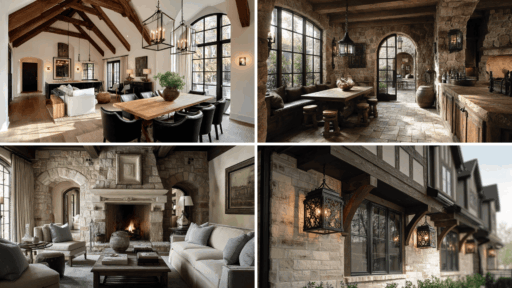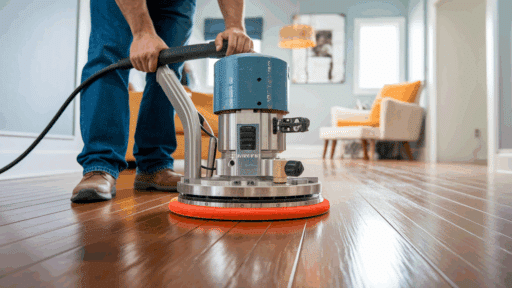If you’re feeling confused by all the buttons on your AC remote control, you’re not the only one. You likely set it to cool, select a low temperature, and call it a day. However there are so many other worthwhile modes and functions on a modern HVAC system, even if you don’t know what half of them mean just yet. The right settings can make your home more comfortable, reduce your bills, and improve your indoor air quality. Here’s a guide to what the most common (and mysterious) AC buttons actually do and when you should use them.
Temperature Basics
The first thing to clear up is how the temperature setting works. The thermostat measures the air in the room, not the air blowing out of the unit. Selecting a lower temperature won’t make the AC cool faster. It will just keep running until the room reaches that target temperature.
You’ll likely find that somewhere in the region of 72°F to 78°F works well during the day, even in the full heat of summer. In fact, in very hot weather, a small temperature difference of around 10 to 15 degrees can be enough to keep you cool, especially in a well-sealed room. If you set the thermostat too low, it can freeze the evaporator coil and damage the unit. In that case, you’ll need to call out an expert like Leaps & Bounds HVAC to repair it.
Modes
Most air conditioners allow you to cycle through five different modes:
- Dry: Dehumidifies the air while cooling slightly, great for sticky days.
- Heat: Works like a heater in winter, only on units with reverse cycle (heat pump).
- Cool: Your standard setting for lowering the room temperature.
- Fan: Moves air around without heating or cooling, designed only for circulation.
- Auto: The unit decides which mode to use depending on your target temperature.
Fan Strength
You’ll also notice a fan speed or fan strength button, which complements the mode you choose. A higher speed will cool or heat faster, but use more power and cost more in electricity. Auto lets the AC adjust the fan on its own for a balance of comfort and efficiency.
Swing or Airflow Direction
When you arrive home after a hot day outdoors and you flop down on the couch, you want an instant cooling effect. Direct the air downwards to concentrate the airflow in one spot. To spread cool air evenly throughout your room, direct the air upwards. If you want to push air throughout the space, or you want to feel a breeze but not constantly, play with the swing functions to see what works best.
Eco
Eco is a wallet-friendly mode that lowers power use by letting the compressor rest more often. It saves energy, but the trade-off is that the temperature may fluctuate a bit more. It’s fine in mild weather, but on really hot days, your unit may struggle to keep up in eco mode. If you notice your room feeling stuffy, it’s best to switch it back to regular cooling.
Boost or Turbo
This is the opposite of eco mode for when you need to cool down, stat. Turbo runs everything at full blast to cool (or heat) as quickly as possible. This mode can guzzle energy, though, so be careful. It provides fast relief, but at a cost. So remember to only use it for a short burst, then switch back to normal mode once you’re comfortable.
Night or Sleep Mode
Usually, night mode will start by cooling the room and then raising the temperature slightly throughout the night. The idea is to match your body’s natural cooling cycle. It’s easier to fall asleep in a cooler room. However, once you’re in the land of nod, your core temperature drops, so you don’t need such a low environmental temperature. If you hate waking up with a chill at 3 a.m., sleep mode is your friend.
Timer
The timer button is another great hack if you like a cool room for getting to sleep, but don’t want it on all night. You should be able to cycle between timer (to switch the AC off) and scheduling (to switch the AC on). Depending on your make and model, this may be displayed in a countdown format, where you set the hours and minutes, or a clock format, where you set the time. This is beneficial, as you can set your AC to power up 30 minutes before you get home from work, so you can walk into a cool, fresh home without paying to run it all day.
Air Purification
The cleaning and air purification functions are displayed in a variety of ways. For purification, some remotes have a forest icon, others use a leaf, or say something brand-specific like ‘Air Magic’. The filters on some units collect dust and pollen, while others release ions to neutralize odors and kill bacteria.
If you see a ‘Clean’ or ‘Auto-Clean’ button, this doesn’t necessarily refer to cleaner air. It usually means your unit has a self-cleaning mode, which is worth initiating every week or two with frequent use. Cleaning cycles typically run for anywhere from 10 to 30 minutes, but it’s best to check with the manufacturer for the specifics of your model.
Endnote
Your HVAC system comes with so many useful options. Now that you finally know how to use them, you can live more happily, healthily, and cost-efficiently. That means no more guesswork or constant temperature adjustments. Next time you pick up the remote, you’ll know exactly what each button means and which setting to choose for maximum comfort.








